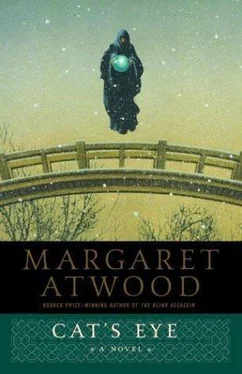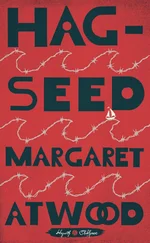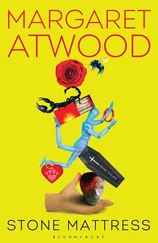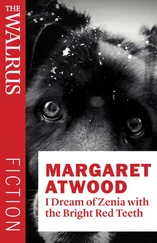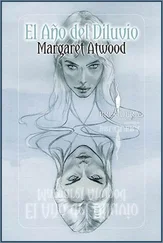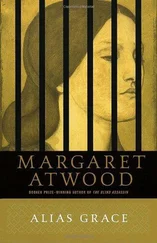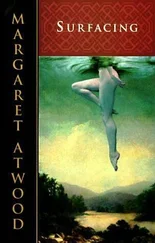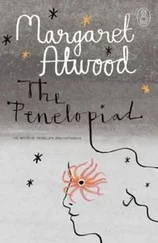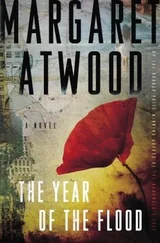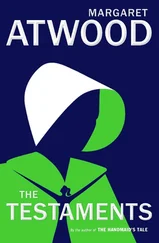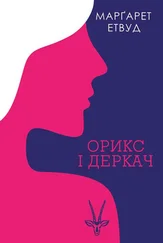Margaret Atwood - Cat's eye
Здесь есть возможность читать онлайн «Margaret Atwood - Cat's eye» весь текст электронной книги совершенно бесплатно (целиком полную версию без сокращений). В некоторых случаях можно слушать аудио, скачать через торрент в формате fb2 и присутствует краткое содержание. Жанр: Старинная литература, на английском языке. Описание произведения, (предисловие) а так же отзывы посетителей доступны на портале библиотеки ЛибКат.
- Название:Cat's eye
- Автор:
- Жанр:
- Год:неизвестен
- ISBN:нет данных
- Рейтинг книги:5 / 5. Голосов: 1
-
Избранное:Добавить в избранное
- Отзывы:
-
Ваша оценка:
- 100
- 1
- 2
- 3
- 4
- 5
Cat's eye: краткое содержание, описание и аннотация
Предлагаем к чтению аннотацию, описание, краткое содержание или предисловие (зависит от того, что написал сам автор книги «Cat's eye»). Если вы не нашли необходимую информацию о книге — напишите в комментариях, мы постараемся отыскать её.
Cat's eye — читать онлайн бесплатно полную книгу (весь текст) целиком
Ниже представлен текст книги, разбитый по страницам. Система сохранения места последней прочитанной страницы, позволяет с удобством читать онлайн бесплатно книгу «Cat's eye», без необходимости каждый раз заново искать на чём Вы остановились. Поставьте закладку, и сможете в любой момент перейти на страницу, на которой закончили чтение.
Интервал:
Закладка:
I don’t like these shadowy, viscous pictures. I prefer the earlier ones, with their daytime clarity, their calm arrested gestures. I have given up, too, on oil paints; I have come to dislike their thickness, their obliteration of line, their look of licked lips, the way they call attention to the brushstrokes of the painter. I can make nothing of them. What I want instead is pictures that seem to exist of their own accord. I want objects that breathe out light; a luminous flatness.
I draw with colored pencils. Or I paint in egg tempera, the technique of monks. Nobody teaches this any more, so I hunt through the library, searching for instructions. Egg tempera is difficult and messy, painstaking and, at first, heartbreaking. I muck up my mother’s kitchen floor and pots, cooking the gesso, and ruin panel after panel before I can work out how to paint it on for a smooth working surface. Or I forget about my bottles of egg yolk and water, which go bad and stink up the cellar with a smell like sulfur. I use up a lot of egg yolks. The whites I separate carefully, and take upstairs to my mother, who makes them into meringue cookies.
I draw beside the picture window in the living room upstairs, when there is nobody home, or in the daylight from the cellar window. At night I use two gooseneck lamps, each of which takes three bulbs. None of this is adequate, but it’s all I can manage. Later, I think, I will have a large studio, with skylights; though what I will paint in it is far from clear. Whatever it is will appear, even later, in colored plates, in books; like the work of Leonardo da Vinci, whose studies of hands and feet and hair and dead people I pore over.
I become fascinated with the effects of glass, and of other light-reflecting surfaces. I study paintings in which there are pearls, crystals, mirrors, shiny details of brass. I spend a long time over Van Eyck’s The Arnolfini Marriage, going over the inadequate color print of it in my textbook with a magnifying glass; what fascinates me is not the two delicate, pallid, shoulderless hand-holding figures, but the pier glass on the wall behind them, which reflects in its convex surface not only their backs but two other people who aren’t in the main picture at all. These figures reflected in the mirror are slightly askew, as if a different law of gravity, a different arrangement of space, exists inside, locked in, sealed up in the glass as if in a paperweight. This round mirror is like an eye, a single eye that sees more than anyone else looking: over this mirror is written, Johannes de Eyck fuit hic. 1434. It’s disconcertingly like a washroom scribble, something you’d write with spray paint on a wall.
There is no pier glass in our house for me to practice on. So instead I paint ginger ale bottles, wineglasses, ice cubes from the refrigerator, the glazed teapot, my mother’s fake pearl earrings. I paint polished wood, and metal: a copper-bottomed frying pan, as seen from the bottom, an aluminum double boiler. I fiddle over details, hunch over my pictures, dabbing at the highlights with tiny brushes. I’m aware that my tastes are not fashionable, and so I pursue them in secret. Jon, for instance, would call this illustration. Any picture that’s a picture of something recognizable is illustration, as far as he’s concerned. There is no spontaneous energy in this kind of work, he would say. No process. I might as well be a photographer, or Norman Rockwell. Some days I agree with him, because what have I done so far? Nothing that doesn’t look like a random sampling from the Housewares Department of the Eaton’s Catalogue. But I keep on.
On Wednesday evenings I take another night course: not Life Drawing, which is taught this year by an excitable Yugoslavian, but Advertising Art. The students are quite different from the Life Drawing bunch. They’re mostly from the Commercial division of the Art College, not the Fine Arts one. Again they’re mostly boys. Some of them have serious artistic ambitions, but they don’t drink as much beer. They’re cleaner and more earnest, and they want paying jobs when they graduate. So do I. The teacher is an elderly man, thin and defeated-looking. He thinks he has failed in the real world, although he once created a famous illustration for canned pork and beans that I can remember from childhood. We ate a lot of canned pork and beans, during the war. His specialty is the rendering of smiles: the trick is to be able to do teeth, nice white even teeth, without putting in the separation between each tooth, which makes the smile appear too canine or too much like false teeth (which he himself has). He tells me I show ability in smiles, and that I could go far.
Jon teases me a little about this night course, but not as much as I thought he would. He refers to the teacher as Mr. Beanie Weenie, and lets it go at that.
Chapter 59
I graduate from university, and discover that there’s nothing much I can do with my degree. Or nothing I want to do at any rate. I don’t want to go on to graduate work, I don’t want to teach high school or be a curator’s flunky in a museum.
By this time I’ve accumulated five night courses from the Art College, four of them in the Commercial area, and I trot them and my portfolio of smiles and dishes of caramel pudding and canned peach halves around to various ad agencies. For these purposes I buy a beige wool suit (on sale), medium-heel pumps to match, some pearl button earrings and a tasteful silk scarf (on sale) at Simpsons; this on the recommendation of my last night course instructor, in Layout and Design, who was a woman. She also recommended a haircut, but I would only go so far as a French roll, engineered with the help of some big rollers and hair-setting gel and a lot of bobby pins. Eventually I get a menial job doing mock-ups, and a small furnished two-bedroom apartment with kitchenette and separate entrance in a large crumbling house in the Annex, north of Bloor. I use the second bedroom for painting, and keep the door to it closed.
This place has a real bed, and a real kitchen sink. Jon comes for dinner and teases me about the towels I’ve bought (on sale), the ovenproof dishes I’ve acquired, my shower curtain. “ Better Homes and Gardens, eh?” he says. He teases me about the bed, but he likes sleeping in it. He comes to my place, now, more often than I go to his.
My parents sell their house and move up north. My father has left the university and has gone back to research; he’s now head of the Forest Insect Laboratory at Sault Ste. Marie. He says Toronto is getting overpopulated, and also polluted. He says the lower Great Lakes are the world’s largest sewer and that if we knew what was going into the drinking water we would all become alcoholics. As for the air, it’s so full of chemicals we should be wearing gas masks. Up north you can still breathe. My mother was not too happy to leave her garden, but made the best of it: “At least it’s a chance to throw out a lot of that junk in the cellar,” she said. They’ve started another garden in the Soo, although the growing season is shorter. In the summers though they’re mostly on the road, driving from infestation to infestation. There is no shortage of insect life.
I don’t miss my parents. Not yet. Or rather I don’t want to be living with them. I am happy to be left to my own devices, my own messes. I can eat haphazardly now, snack on junk food and takeouts without worrying about balanced meals, go to bed when I like, let my dirty laundry rot, neglect the dishes. I get a promotion. After a time I move to the art department of a publishing company, where I design book covers. At night, when Jon is not there, I paint. Sometimes I forget to go to bed, and find that it has become dawn and I have to change into my work clothes and go to work. I am groggy on those days, and have trouble hearing what is said to me; but nobody seems to notice. I get postcards and the occasional short letter from my mother, sent from places like Duluth and Kapuskasing. She says the roads are getting too crowded. “Too many trailers,” she says. I reply with news about my job, my apartment, and the weather. I don’t mention Jon, because there is no news. News would be something definite and respectable, such as an engagement. My brother Stephen is here and there. He has become more taciturn: he too now communicates by postcard. One comes from Germany, with a man in short leather pants on it and the message: Great particle accelerator; one from Nevada, with a cactus and the note, Interesting life forms. He goes to Bolivia on what I suppose to be a holiday, and sends a cigar-smoking woman in a high-crowned hat: Excellent butterflies. Hope you are well. At one point he gets married, which is announced by a postcard from San Francisco, with the Golden Gate Bridge and a sunset on it, and, Got married. Annette sends regards. This is all I hear about it until several years later, when he sends a postcard of the Statue of Liberty from New York, which says: Got divorced. I assume he has been puzzled by both events, as if they’re not something he’s done himself, on purpose, but things that have happened to him accidentally, like stubbing your toe. I think of him as walking into marriage as into a park, in a foreign country, at night, unaware of the possibilities for damage.
Читать дальшеИнтервал:
Закладка:
Похожие книги на «Cat's eye»
Представляем Вашему вниманию похожие книги на «Cat's eye» списком для выбора. Мы отобрали схожую по названию и смыслу литературу в надежде предоставить читателям больше вариантов отыскать новые, интересные, ещё непрочитанные произведения.
Обсуждение, отзывы о книге «Cat's eye» и просто собственные мнения читателей. Оставьте ваши комментарии, напишите, что Вы думаете о произведении, его смысле или главных героях. Укажите что конкретно понравилось, а что нет, и почему Вы так считаете.
